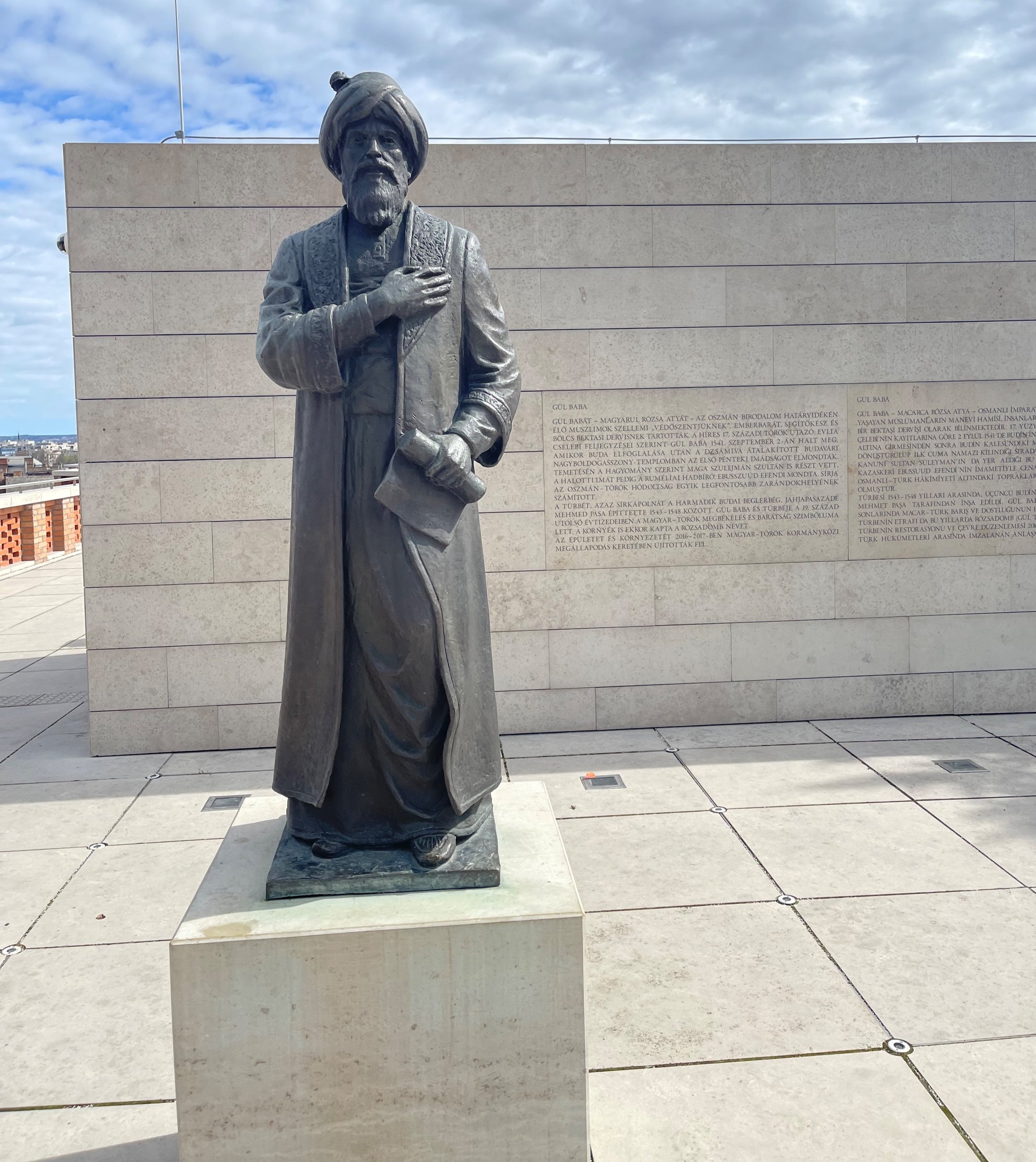Snapshot: Gül Baba’s Tomb
Introducing: Snapshot
Snapshot columns for the blog will look at one specific place or cultural detail against the broader backdrop of its historical (and/or current cultural) context.
The complex and gardens around the tomb of Gül Baba, a member of the Bektás Dervish Order. It is the northernmost Islamic pilgrimage site in the world. (Photo: Julie Strickland)
Introducing: Ottoman Hungary
Hungary’s geographic location in the center of Europe – along with its primary landscape of flat plains (see: The Alföld) – means it has long been the subject of invasion, conquest, and recovery. One of many such confrontations were those with the Ottoman Empire, which began rumbling in the 1360s. The country bore the brunt of the Ottoman push north of the Balkans, finally falling following the Battle of Mohács in 1526. The Ottomans then ruled most of Hungary until 1699, when the Treaty of Karlowitz marked the end of their control in most of Central Europe and established the Habsburgs as the dominant regional power.
In other words, the Ottomans fought in Hungary, the Ottomans won in Hungary, and then (eventually) were given the boot. But what about that 173-year period in the middle?
This has continually been my question, as a lot of Hungarian historiography tends to leap over this period. Rather than accepting the implication that it isn’t worth knowing, this has piqued my curiosity. What happened during this time? How did people live? Who were the. major players? And why is collective memory so uncomfortable with it?
It was against this backdrop that a colleague suggested I visit Gül Baba’s tomb in Budapest. She’s yet to steer me wrong (see: Gyula!), so I ventured over during a recent stay in the capital.
The place: Gül Baba’s Tomb and Rose Garden
The most noticeable thing about Gül Baba’s tomb, like much of the story of the Ottoman period in modern Hungary, is how hidden away and tricky to find it initially is. The complex is tucked into a very snug corner of Buda’s 2nd district, just to the northwest of the Margit Bridge. Nestled into the hilly Rózsadomb (Rose Hill) neighborhood, it’s a short but steep climb up Mecset (mosque) Street. Entering the monument complex itself continues the climb. Leveled gardens lead up to the central tomb and cultural center: the first is a magnolia garden – just beginning to bloom at the time of my visit in late March; the second a lavender garden, the third a rose garden (with holly and other flora alongside).
From the top of the monument, you can see the dome atop Gül Baba’s tomb with the Hungarian parliament in the background across the Danube.
(Photo: Julie Strickland)
The star and crescent (or Hilal) atop the tomb’s dome are only visible from within the complex. Even just outside its walls, you cannot see it from the street.
The man: Gül Baba
Statue of Gül Baba (Photo: Julie Strickland)
Gül Baba – or Father of Roses – was an Ottoman Bektashi dervish poet and companion of Suleiman I (or Suleiman the Magnificent – a moniker Hungarians rarely embrace) who was reportedly by his side during many European campaigns. He is thought to have died in Buda in 1541, or to have been killed in fighting below the city walls that same year. Suleiman, who was also Caliph at the time, made Gül Baba patron saint of the city. The tomb became a site of Islamic pilgrimage – and is today the northernmost such site in the world.
In 1885, the Hungarian architect János Wágner – who owned the land on which the site was located – oversaw the restoration of the tomb. When this work was completed in 1914, the site was declared a national monument. Restored again in the 1960s and 1990s, Hungary and Turkey co-financed the site’s most recent 8.1-million-euro renovation, completed in 2018.
Getting there
Gül Baba’s tomb is in the Rózsadomb neighborhood in Buda’s 2nd district. It’s a 5-8-minute walk from the Margit híd, budai hídfő or Szent Lukács Gyógyfürdő tram stops – serviced by the 17, 19, 41, 4, and 6 tram lines. Buses 6, 26, 226, 91, 191, 291, and 931 likewise stop here.
Entry to the site is free.










